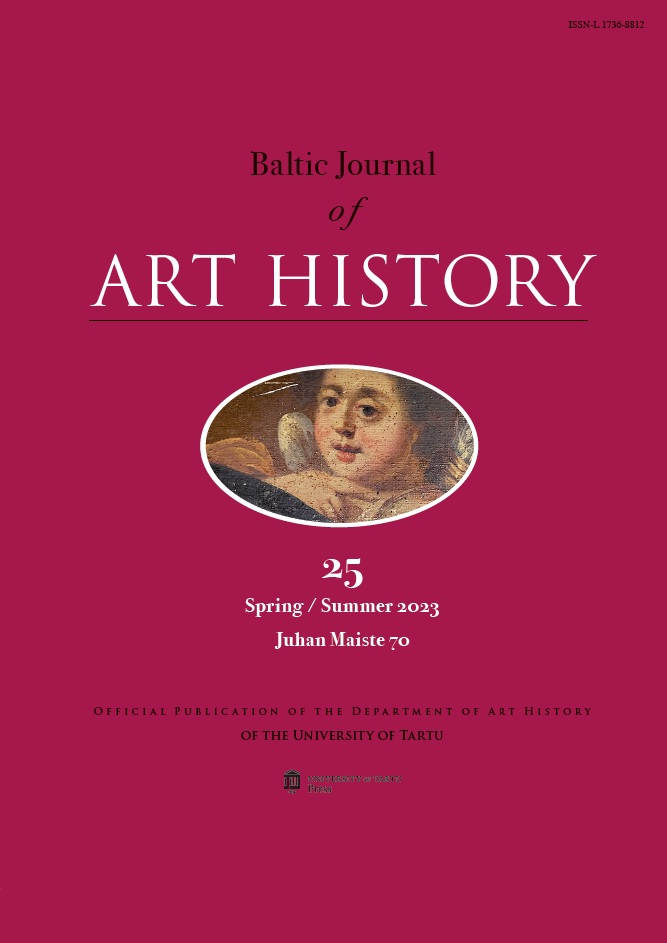DATING THE NEWLY DISCOVERED CEILING PAINTING IN THE HOUSE OF ESTLAND’S NOBILITY IN TALLINN
FROM ARCHIVAL RESEARCH TO DENDROCHRONOLOGY
DOI:
https://doi.org/10.12697/BJAH.2023.25.02Keywords:
craft guilds, early modern period, archival research, ceiling painting on canvas, baroque plafond, dendrochronological dating, ceiling beamsAbstract
In the course of renovating the Estonian Knighthood (Ritterschaft)
House in the autumn of 2022, a magnificent find came to light in the
ceiling of a first floor room – a figural plafond painting on a canvas
attached to the ceiling. This find is sensational since it adds to the
number of rare and fragile canvas plafonds, only a few of which
survive in Estonia. This article demonstrates how archival research
and dendrochronology can work together hand in hand. According
to historical documents, this part of the Knighthood House was built
around the year 1690, because it was described as nearly finished
in the spring of 1691. By applying dendrochronological dating, it
was possible to ascertain that the trees that form the main wooden
structures were felled after the growing season of 1689 and were
used in construction, probably in 1690. The Üxküll family of Vigala
manor sold their newly completed town palace to the Knighthood of
Estonia in 1694 for unknown reasons. The plafond painting probably
originates from the period between those two dates, 1690 and 1694.
Thus, the Knighthood House’s plafond ceiling is the only firmly
dated painting of this kind in Estonian architecture. It originates
from an earlier period than most other plafond paintings in Tallinn,
which are assessed using stylistic comparison as dating from the
period after the Great Northern War, specifically from 1721 to 1760.
The nearly 60 m2 plafond is certainly the largest in Estonia. The use
of distemper and oil paint techniques together makes this painting
remarkable. It is also the only known plafond with more than one
painting layer from different periods. At the time of writing, the
painting has not yet been exposed to view. Its thematic subject matter
and the details of its technical realisation will be revealed only
after its restoration. The question of the authorship of the plafond
painting also remains unanswered at this stage. The overpainting
with Rococo ornamentation covering the original painting can be
cautiously associated with the name of the guild painter, Gotthard
Holm, who was paid for work done in the Knighthood House in
the 1760s.

